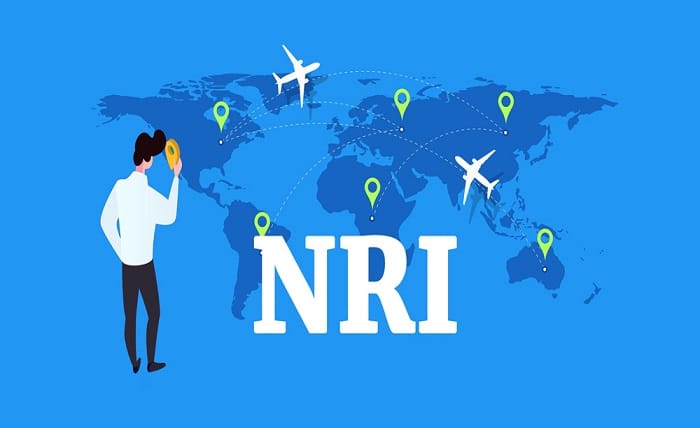How NRIs can diversify their portfolio with Insurance Nifty Midcap?

As a Non-Resident Indian (NRI), retirement planning provides a set of distinct obstacles. You’re probably accumulating wealth overseas while hoping for a decent life back home. When you live far away, it might be difficult to keep track of what is going on at home. Finding the appropriate NRI plans in a flood of information can be as tough as booking a flight back to India during the high summer season. Despite these hurdles, ignoring investment in one of the world’s fastest-growing economies is not a good choice. Investing in India across asset classes not only provides smooth diversification but also serves as a worldwide hedge for their portfolio. In this post, we are going to be talking about two options that fall under the NRI plans: Insurance and Nifty Midcap.
First, insurance
NRIs wishing to begin their investment journey in India should consider insurance specifically term plans and health insurance. In the case of term plans, insurance coverage should be at least ten times your annual salary. Ideally, one should search for coverage of 20 times his or her annual salary. One of the most important benefits which NRIs can enjoy when purchasing a life insurance policy for an NRI in India is the low premium rate. Term insurance for NRIs (a type of life insurance) in India is at least 50-60% less expensive than international term policies. NRI life insurance is one of the best NRI plans as it allows you to acquire a large life insurance policy for your family in India at a low premium rate.
Moreover, purchasing NRI life insurance in India can make the procedure easier for your family because they can settle their life insurance claims by visiting the company’s office in India. This saves your relatives the trouble of flying all the way to your present nation of residency merely to have their claims resolved.
Non-life insurance, such as medical insurance, is particularly vital because India provides affordable medical care.
Check your eligibility: Just like other investment instruments, it is important to check your eligibility with an insurance policy also.
- NRIs, PIO and OCI Card holders, and foreign citizens are eligible to purchase life insurance in India, subject to certain requirements. NRIs are Indian nationals who have lived abroad for a set period of time. PIOs are citizens of any country other than Bangladesh or Pakistan who have previously held an Indian passport, or whose parents or grandparents were citizens of India under the Citizenship Act, 1955, or are the spouses of an Indian citizen or a person mentioned in clauses 1 or 2.
- If you are an NRI and wish to acquire life insurance in India, you must have a valid passport issued by the Government of India. And if you are a PIO and fall under one of the above-mentioned categories, you can certainly get life insurance coverage in India. Along with that, make sure you have all of the necessary documentation for the NRI plans you are eligible for that you want to purchase.
Compare different insurance policies: After determining your eligibility, you must compare and choose the most appropriate insurance provider. Different insurers offer a variety of advantages such as exit benefits, premium returns, and extra riders.
Select Your Mode of Premium Payment: Insurance companies in India provide a choice of premium payment methods to NRI consumers. NRIs have the option of paying their premiums in a single lump sum, with a limited premium payment period, or throughout the course of the policy in monthly, semi-annual, or yearly installments. Not only that, but most insurers provide an additional 5% discount on premiums if the preferred mode of premium payment is annual. You should always analyze and select the most appropriate premium payment options for the insurance in advance.
Understand thoroughly about Medical Examination Procedure: Purchasing life insurance requires you to undergo a medical examination. NRIs can purchase a life insurance policy without having to travel all the way back to India to get their medicals cleared. NRIs can arrange and get their medicals cleared from the comfort of their own homes using tele and video medical channels as well and acquire life insurance in a matter of minutes.
Look at the Claims Settlement Ratio and Process: The claim settlement ratio is the ratio of total claims received to total claims filed within a fiscal year. You should always examine the company’s CSR values and ensure they are at least 95% and above. This percentage provides insight into the insurer’s dependability in settling your family’s future claims. Most insurance companies in India provide a speedy claim settlement process for NRIs.
Second, Invest in equities
NRIs with long-term investing horizons should consider increasing their allocation to equities. According to the finance ministry’s forecasts, India will become the world’s third-largest economy by 2030, with a potential GDP of $7 trillion, thanks to demographic advantages, the China+1 theme, and Aatmanirbhar Bharat activities. These improvements are expected to positively impact the Indian equity markets.
Currently, large-cap stock values look to be more advantageous than mid and small-cap companies. Over the last year, the Nifty Midcap 100 has risen by more than 57%, the Nifty Smallcap 100 by 63%, and the Nifty 50 by 26%. Foreign institutional investors are likely to re-enter the market, with a preference for large-cap equities, as the Federal Reserve decreases interest rates. As a result, NRIs making investments now may profit from devoting a bigger share of their portfolio to large-cap equities.
NRIs who are more aggressive with their investments may also consider investment banking arrangements such as preferred share allotments. However, keep in mind that SEBI has a 6-month lock-in term for allotted shares.
How should NRIs go ahead with Investing in India?
First, creating a Balanced Portfolio: A well-rounded retirement portfolio should combine security and growth. Here’s how to combine insurance with the Nifty Midcap 150 Momentum 50 Index:
Invest in ULIPs: If you want larger returns and some safety, try a ULIP that focuses on equity funds. Remember the accompanying market risks. In ULIP, you will be able to provide insurance coverage as well as gain profit using the Nifty Midcap 150 Momentum 50 Index.
Focus on the Index Fund: Put a major percentage of your retirement savings into an index fund that tracks the Nifty Midcap 150 Momentum 50 Index. This provides long-term growth potential.
Diversify Further: Consider including other asset classes in your portfolio, such as bonds or international funds, to increase diversification and potentially reduce volatility.
So we’re saying:
Building a retirement portfolio as an NRI necessitates a strategic strategy. Combining insurance and the Nifty Midcap 150 Momentum 50 Index can provide NRIs with a well-diversified investment portfolio that includes stocks, bonds, real estate, and commodities. Each asset class responds differently in different market conditions, so having a variety reduces risk.




